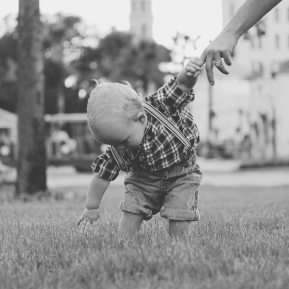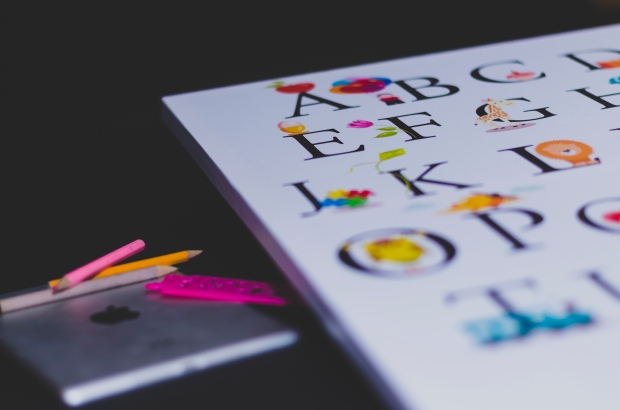Today a situation happened where T came to J and bothered her while she was reading. Because J was bothered, she became upset and took the paper crown that T was holding and tore it up. Obviously, T became upset. Unfortunately I saw only the after-effect, where I could hear T crying and asked him what happened. When I asked J why did she rip up T’s paper crown she said ”because he did this..”
Another situation happened today where V called F names and F reacted by hitting V. Even though it was a different situation than what happened to T and J, the behavior and outcome was the same: The child receiving an action they didn’t like/was unpleasant ”retaliated” immediately by hitting or doing something equally as harmful.
Therefore, today the point of ”an eye for an eye” is what I’d like to share in this post. ”An eye for an eye” comes from a Bible reference, and according to Wikipedia, it is the law of retaliation — the principle that a person who has injured another person is to be penalized to a similar degree, or in softer interpretations, the victim receives the [estimated] value of the injury in compensation.
Within my 9 months working at this school what has been shown to me is that there is a tendency for children to fight back and/or retaliate equally when they are harmed in some way by another child. Not every child acts like this, of course, but this behavior is common and obvious in the classroom.
When I look at the word ‘retaliate’ what comes up in me is war, and how children, when they act out in retaliation, they fight against each other in that moment as if in war, yet they are unaware of the consequence because they act out in emotion. In war usually the different sides want the other to experience a certain way due to the extent of emotion the other has to them, whether of anger, hate, etc — which is why they set off bombs and use weapons. However in this case I am showing that children who act out against in each in harming each for for the sake of ”getting back for what another has done to them” is just like war where for example one country is has been harmed by another country and wants to ”fight back” for the sake of what? So the other country can FEEL/EXPERIENCE what they did to another.Unfortunately by repeating this act of ”an eye for an eye,” whether as an individual or country only fuels this pattern, and no long-term solution can be found.
The other teachers and I in the classroom must repeatedly remind the children how we don’t accept and allow this ”eye for an eye”/ retaliation behavior, and we provide tips on what to do next time (ie: say STOP, or get a teacher) but it ends up going in one ear and out the other (meaning- they don’t integrate it/live in their reality and keep repeating the behavior). Perhaps this is because it is difficult for the child to control themselves when in emotion, where it is so easy to act out and hit another/make another feel equally as bad.
For children, placing shoes in another is difficult because they are young and haven’t developed the skill yet. For us adults, with living on this planet for several years, interacting with people, being aware of what’s going on in the world, we can more easily do this, but it is a decision we must make, to practice/imagine being in the shoes of another and act in accordance to that, and some of us don’t want to step in the shoes of another for fear of realizing that what we are doing to another is not cool and we wouldn’t like it done unto us…and yet it is so much easy to remain ignorant and continue living our lives in self-interest/unawareness…
It is so easy to fight back, to yell back, to respond back in emotion, but the consequences are much worse than if we were to step back, breathe, assess the situation, and see how to direct the situation that is best for both parties. It is challenging to do this when you are in the face of conflict where you for example are so overwhelmed in emotion you would like nothing better to do than to let that other person know and experience how you feel… just realize that if you allow yourself to ‘give into’ this desire of an ‘eye for an eye’ — acting out in self-interest in spite of another, you are actually fueling the pattern of retaliation and war not only in yourself and personal life, but your very actions also support and show that retaliation on a global scale is ok too.
What we accept and allow on a personal level is reflected on a global level. The more we allow war with each other through fights, conflicts and ‘getting back’ to each other in spite, the more we allow such things to happen on a global scale, like war between countries.
What I suggest for us as teachers, educators, parents and adults to do is to become aware of where we are spiting others, and even where we spite ourselves/go into conflict with ourselves — where we judge ourselves, hate ourselves, beat ourselves up when we don’t reach certain expectations…these patterns we exist in get influence and transfer onto our children.
So, hey everyone, let’s look out for these harmful patterns and empower ourselves to become something better by using tools of self-purification: purifying ourselves from the war and destruction within and towards each other. We can for example identify the problems that compromise ourselves and our lives, forgive ourselves and script a new way of living.
Additional Info:
School of Ultimate Living – Develop Your Utmost Potential
EQAFE.com – Self Perfection Merchandise
DIP Lite – Free Self-Development/Self-Empowerment Course
Desteni.org – Extraordinary information on human consciousness
 I was inspired by a video clip of a father making funny faces to his baby and the baby was laughing hysterically.
I was inspired by a video clip of a father making funny faces to his baby and the baby was laughing hysterically. I got the opportunity to run my own classroom downstairs where I work with 6-7 children for about 3 hours, 5 days a week. It may not seem like a lot of time with them, but for me it is. These moments are filled with spontaneous activity, new ideas, activities, discussions, learning – every day is new and unpredictable, so in a way I have to roll with it yet keep to a structure as best as I can.
I got the opportunity to run my own classroom downstairs where I work with 6-7 children for about 3 hours, 5 days a week. It may not seem like a lot of time with them, but for me it is. These moments are filled with spontaneous activity, new ideas, activities, discussions, learning – every day is new and unpredictable, so in a way I have to roll with it yet keep to a structure as best as I can. ”When is it 2 o’clock?” (pick-up time)
”When is it 2 o’clock?” (pick-up time) Killy joy: A person who spoils the enjoyment of others
Killy joy: A person who spoils the enjoyment of others It’s been one year for me working as a teacher’s assistant in a bilingual kindergarten. When I first started, I was really thrown into the deep end — I had no prior experience to working all day with children 3-6 years old (the majority of my experience was with older children like 9+), and the assistant I replaced was well-liked by the children, so they were not so open to accepting me.
It’s been one year for me working as a teacher’s assistant in a bilingual kindergarten. When I first started, I was really thrown into the deep end — I had no prior experience to working all day with children 3-6 years old (the majority of my experience was with older children like 9+), and the assistant I replaced was well-liked by the children, so they were not so open to accepting me. I had for a long time reacted to 4 year old V for his behavior and difficulty listening to teachers and children. He is different in that he cannot connect easily with the school materials and/or with other children by socializing.
I had for a long time reacted to 4 year old V for his behavior and difficulty listening to teachers and children. He is different in that he cannot connect easily with the school materials and/or with other children by socializing.  My situation is specific since I work in a private kindergarten, so I will write from that starting point:
My situation is specific since I work in a private kindergarten, so I will write from that starting point: I attended a parent’s evening where the other teachers and I got to give presentations on what we do with the children and answer questions for the parents.
I attended a parent’s evening where the other teachers and I got to give presentations on what we do with the children and answer questions for the parents.